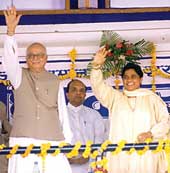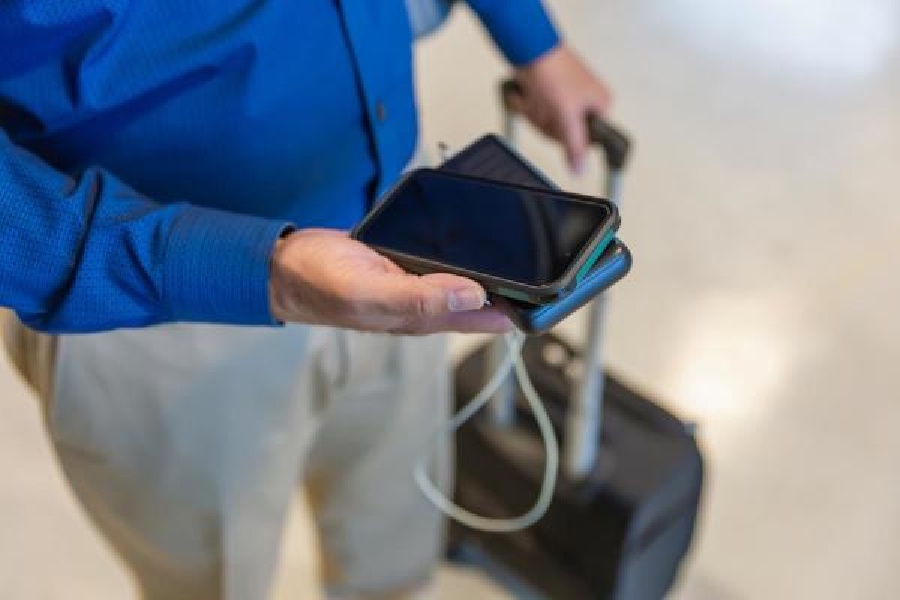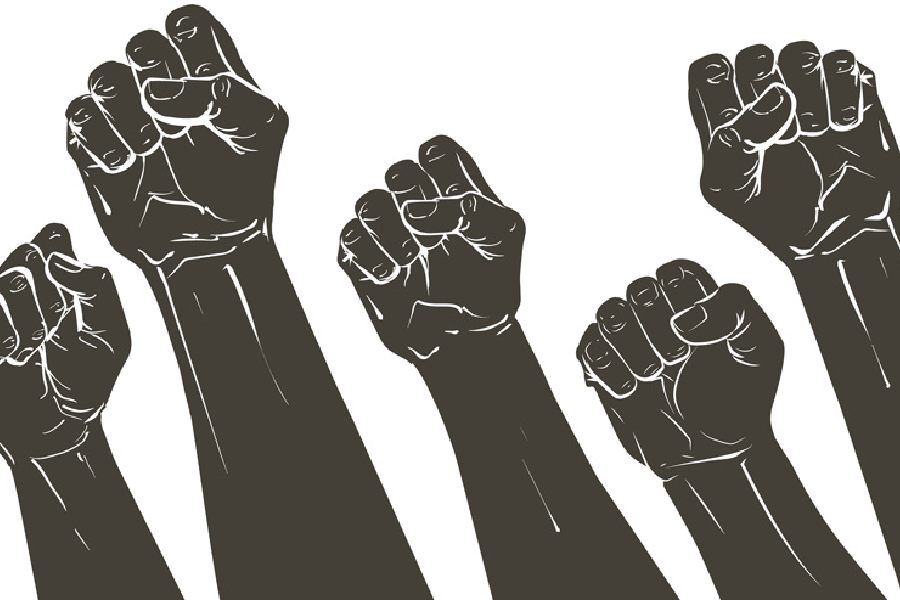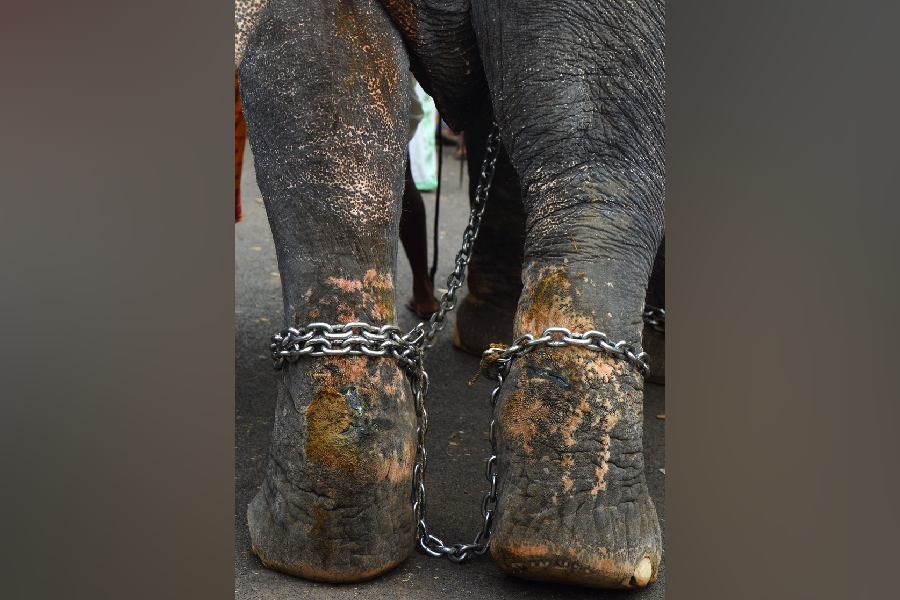|
|
| Joy of riding |
As the latter half of the nineteenth century became a world on the move, photography was there to record various modes of transportation. Between 1894-96, the US-based Transportation Commission headed by railroad publicist Joseph Gladding Pangborn documented the world-wide process, backed up by an impressive portfolio of nine hundred images by photographer William Henry Jackson. There are elephants, camels, horses, sleds and sleighs, sedan chairs, rickshaws, railroads from Africa, Asia and Australia. From India, photographs of crowded railway platforms, a woman bowed down with a load of large tin sheets on her head, two Tibetan women in the Darjeeling region of north Bengal peering out of a railway carriage marked ‘ladies only’, were circulated widely, flee- ting testimonies of different life experiences.
This was, of course, after the coming of the railways. But for long decades before, human ingenuity had depended on other forms of locomotion. For the more daring, horses were indispensable across lonely terrains, inhospitable deserts and on the battlefield; Rana Pratap’s Chetak remains an icon in the mythology of human-animal relations; and who knows what Rani Lakshmibai of Jhansi’s fate would have been in the battle for Gwalior in February 1857 if her mortally wounded faithful steed had not been replaced by a younger, less known one? The increasingly complicated business of the Raj, families on the move, the occasional joy ride (see photo) — all depended on trusted animals. Horse-drawn carts, carriages, and of course the worthy bullock-cart that remains an abiding counterpoint to many a Merc on dust-laden Indian roads — have a long history.
Among the more fragile cargo that bullock carts were entrusted with was tons of photographic gear not only of individual entrepreneurs such as Raja Deen Dayal and Samuel Bourne but also of Linnaeus Tripe, an officer of the 12th Madras Native Infantry. Nothing less than four bullock carts to transport equipment and his staff on a journey that was to cover Salem, Srirangam, Trichy, Madurai, Pudukkottai and Tanjore and finally Madras. Some decades earlier, when security of person and goods was a very real issue in the Indian countryside, Reginald Heber, Bishop of Calcutta, baulked at the size of a modest entourage of three elephants, over twenty camels, five horses and several ponies. He was on an extensive tour of India that involved tug and steamer rides as well as the services of several animals. As he went on, a number of small traders and others, believing in safety in numbers, asked to join the large party and “travel under our protection” (Narrative of a Journey through the Upper Provinces of India, 1873).
In urban areas, people on the move were a powerful visual reminder of class and caste differences: those better placed in life were borne to their destinations in palanquins on the shoulders of strong young men, most often from the lower castes. Those with curtained doorways took girls to schools, and women who observed parda, to carefully monitored venues — that often included a visit to a zenana photo studio. Dandies — described at length by Christina Bremner in A Month in a Dandi — A Woman’s Wanderings in Northern India (1891) — catered to those willing to brave the mountains in hammock-like slings carried by sturdy coolies. Around 1880, human-powered rickshaws appeared first in Simla (remem- ber Kipling’s “The Phantom Rickshaw”?) and then, 20 years later, in Calcutta.
Such forms of transportation depended, of course, on the existence of usable roads and feasible land routes. That this was not always the case is brought home to us in innumerable memoirs where riverine journeys transported young girls like Kamini Sen (later Ray, a poet) in the 1870s to school in Calcutta from distant Backergunje. Or helped Koilashbashini Mitter form a deep bond with her husband, the Company servant, Kissory Chand, on the long days and nights spent on the rivers of east Bengal, away from the knowing eyes of the women of the family andarmahal (inner quarters). “We played cards and chatted”, she reported many years later in Janaika Grihabadhur Diary. An activity certainly unheard of in the segregated and carefully monitored environs of the joint family home.
Enterprising memsahibs with a yen to explore the Indian hinterland had to contend with a various means of locomotion. In December 1834, Fanny Parks (Begums, Thugs and Englishmen — The Journals of Fanny Parkes, 2003), among the more likeable woman travellers, who was eager to accept this country with all its spots and warts, sailed from Allahabad to Agra. She undertook the journey of 51 days with a crew of 21 — and her pet terrier. A few years later, in the spring of 1838, Fanny travelled to Landowr (Landour, Mussoorie) in a night-time journey alive with uncertain adventure: she wrote “We passed through a forest — or sal jangal, as they call it — in which wild elephants are sometimes found, and met with a little adventure: a tiger was lying by the roadside; the bearers put down the palanquin, waved their torches, and howled and screamed with all their might: the light and noise scared the animal — he moved off.”
Fanny traversed north India by boat, pony cart and palanquin; had she visited a couple of decades later, she would surely have been one of the first women to board a railway carriage. Introduced in 1853 — after deliberations that lasted ten years — the first section of the Great Indian Peninsula Railway linked Bombay to Thana. The train, viewed initially as “an incarnation of the devil” (Samuel Bourne) by the fear-stricken ‘natives’, soon became the symbol of imperial power, furrowing through virgin territory. A few months later, in February 1855, a carriage rolled out of what was then Howrah station, a motley collection of huts and sheds, to the coalfields of Ranigunge. Madras Presidency inaugurated the Madras railway the following year and the city was linked to Arcot, 63 miles away.
Not only did the train radicalize travel but also the railway system soon became a way of life, an employer and a rich source for real and fictional adventures and fantasies. The railway station was a landmark, a venue that marked out a village, town or city, the anonymity of the railway platform and the sheds that constituted the station, were clearly spaces of relative freedom. From the point of view of governance, apart from the movement of goods and personnel, the railways made relocation of troops easier — as was evident in 1857-8.
At the same time, it was important to provide for the security of railway lines, bridges and tunnels. Thus, the grim, fortified station at Lahore. Others, though formidable, were nevertheless splendid architectural sights, such as Victoria Terminus (VT, now known as the Chhatrapati Shivaji Station) in Bombay. In part like an Oxford College, its walls are emblazoned with monkey-gargoyles as well as frescoes of steam engines.
F.W. Stevens, the engineer who conceived of this grand structure clearly had a definite view of empire — though it is doubtful whether he had ever envisioned the many uses the wide platforms would be put to. Dormitory, recreation centre, worship space, food mall, playground, bookshop — who can ever deny the varied life of the Indian railway platform.
Not long ago, many old timers raised an alarm when the railways minister, Lalu Prasad, threatened to do away with the A.H. Wheeler bookstands-on-wheels. It would be nothing short of an amputation, they cried! They remain — as do stalls that churn out kulhars (earthen cups) of distinctive, sickly sweet tea and may be the odd pakora. The taste buds of generations have been imprinted with this strong brew blended with clay, cow’s milk and the unmistakable odour of new places, people and experiences — a new India on the move through a historic railway system.











